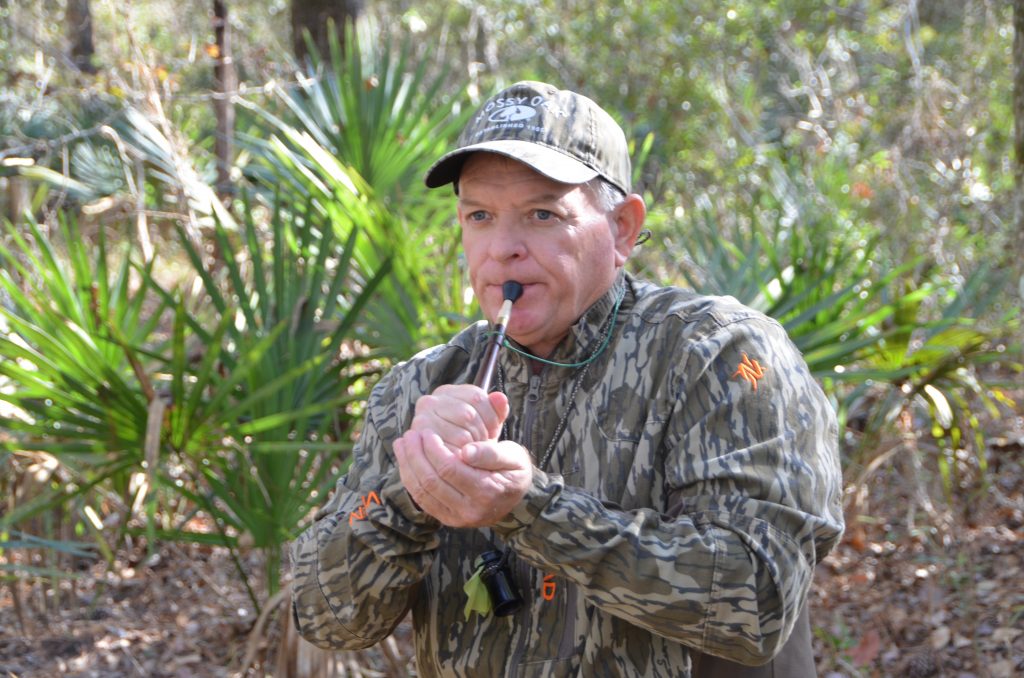Sounds That Kill: Defining Realism In Calling
Turkeys sound different from one another, so it can be tough for callers to pin down true realism. Experts say the answer is in the details.
When asked what they strive for most when calling, experienced turkey hunters often provide the same answer: realism.
However, that broad term covers many aspects of calling, including pitch, cadence, volume and other considerations. So it’s not surprising that some folks question what truly defines realism when imitating turkey vocalizations. Here’s what the pros say.
“When it comes to realistic or unrealistic calling, there are so many different variables,” said Josh Grossenbacher, the 2015 World Championship Turkey Calling Contest winner and two-time NWTF Grand National Calling Championship Senior Division runner-up. “What I’ve found that works best for me are the changes in pitch, adding that extra emotion that I feel a lot of callers and hunters overlook, as well as the ability to control volume. Being able to call softly when needed is, in my opinion, probably one of the most lethal tactics when it comes to calling.”
Larry Proffitt, longtime GNCC judge and renowned calling expert, said he’s found that some calling instruments produce more realistic sounds, especially in the woods.
“Many years ago, I bought Lovett Williams’ ‘Real Turkeys’ tapes and started recording my calling,” he said. “One thing I discovered in experimenting is that a clear break between yelps adds immensely to realism in calling. At the limits of distance from the recorder, I found many different callers resembled a monotone. Rollover sounded more like a real turkey. Air instruments with chop sounded more like a real turkey.”
A subsequent encounter provided a perfect example. Proffitt said he gave a Lynch Deluxe Fool Proof box call to a local NWTF chapter at a sports show and then walked away to enjoy the event.
“I was intently looking at an old double-barrel when a real turkey hen turned my head, and I exclaimed, ‘Man,’” he said. “I set the double-barrel down and walked back that way. Periodically, I would hear the hen yelp three or four yelps. I eased toward the turkey until I was in front of the chapter booth. An old man was talking to someone and periodically just hitting on that Fool Proof. I wrote the story down in my journal when I got home the next day and was amazed and thankful for the discovery.”
Proffitt said it’s also important to produce realistic calling sequences, not just individual vocalizations.
“The mood and situation dictate the calling sequence of hens and gobblers, fall and spring,” he said. “Each situation often requires different techniques, but that is a whole different study.”
Boosting calling realism requires substantial observation and practice, and Grossenbacher said hunters should consult the true experts.
“The best way to add realism is listening and practicing your calling while listening to real turkeys,” he said. “It’s by far the best way to pick up the cadences, pitch changes and changes in emotion as the excitement in a hen increases or decreases.”
Some hunters might wonder about the importance of realism, especially in an age of pop-up blinds and lifelike decoys. Grossenbacher said it remains critical.
“Realism will increase hunting success with the amount of confidence gained and all the practice you’ve put in,” he said. “Real confidence is hard to beat when you believe in what you’re doing and know the turkeys do, too.”
Proffitt agreed, saying realism is especially vital when calling to experienced birds.
“Realism in calling cadence, volume, pitch and sequence is very important on old turkeys — gobblers and hens,” he said. “In my opinion, serious turkey hunters are continually striving to effectively communicate with old gobblers with the goal of eating more turkey. Courtesy gobbles make thin soup.”

CONNECT WITH US
National Wild Turkey Federation
770 Augusta Road, Edgefield, SC 29824
(800) 843-6983
National Wild Turkey Federation. All rights reserved.
